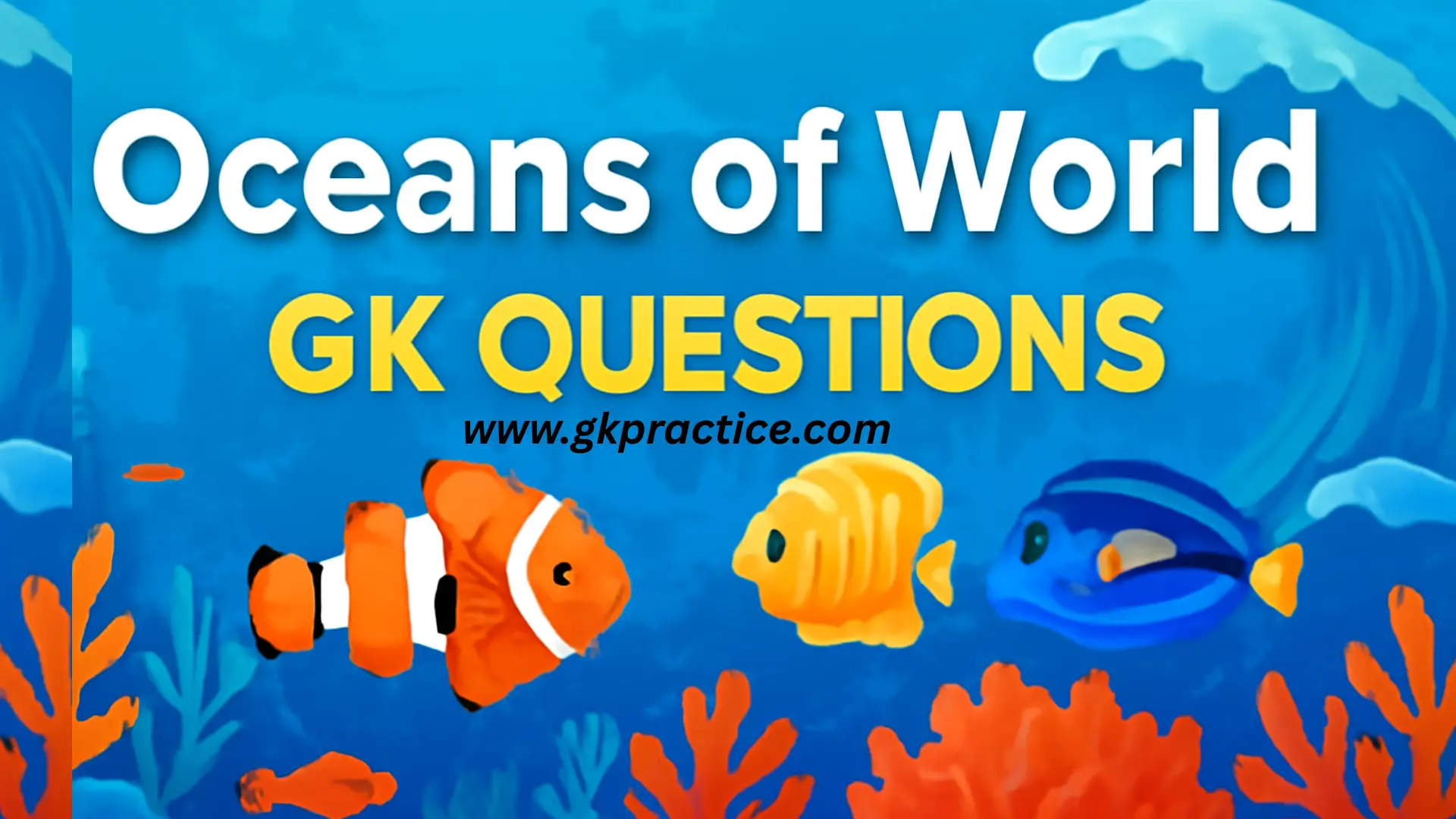Are you ready to explore the fascinating world of oceans? These Oceans of World GK Questions cover interesting facts and details about the world’s oceans. Answer the multiple-choice questions and check explanations to enhance your general knowledge.
Test Your Knowledge with These Oceans of World GK Questions:
A. Atlantic Ocean
B. Indian Ocean
C. Pacific Ocean
D. Arctic Ocean
The Pacific Ocean is the largest and deepest ocean on Earth, covering more than 63 million square miles. It extends from the Arctic in the north to the Southern Ocean and touches many continents and islands, making it a major driver of global weather and marine biodiversity.
A. Arctic Ocean
B. Atlantic Ocean
C. Southern Ocean
D. Indian Ocean
The Arctic Ocean is the smallest and shallowest ocean, located around the Arctic region. Despite its size, it plays a vital role in regulating Earth’s climate and is home to unique marine species adapted to extreme cold conditions.
A. Atlantic Ocean
B. Pacific Ocean
C. Indian Ocean
D. Southern Ocean
The Pacific Ocean is surrounded by a major belt of volcanic activity called the Ring of Fire. This zone has frequent earthquakes and volcano eruptions due to tectonic plate boundaries around the ocean.
A. Indian Ocean
B. Atlantic Ocean
C. Pacific Ocean
D. Arctic Ocean
The Indian Ocean is the warmest ocean due to its tropical location. It experiences high surface temperatures, influencing monsoon patterns and supporting rich marine biodiversity, including coral reefs.
A. Atlantic Ocean
B. Pacific Ocean
C. Indian Ocean
D. Arctic Ocean
The Pacific Ocean contains the Mariana Trench, the deepest point on Earth at around 11,034 meters. It hosts unique deep-sea ecosystems and extreme pressure-adapted marine life.
A. Atlantic Ocean
B. Indian Ocean
C. Pacific Ocean
D. Southern Ocean
The Indian Ocean borders the east coast of Africa, influencing trade, climate, and monsoon systems in the region. It is the third-largest ocean and a critical route for maritime commerce.
A. Atlantic Ocean
B. Indian Ocean
C. Southern Ocean
D. Pacific Ocean
The Southern Ocean surrounds Antarctica and is known for cold temperatures, strong circumpolar currents, and unique marine life including penguins and krill.
A. Atlantic Ocean
B. Indian Ocean
C. Pacific Ocean
D. Arctic Ocean
The Atlantic Ocean is the second largest ocean and separates the Americas from Europe and Africa. It is known for its mid-Atlantic ridge, warm currents, and maritime trade routes.
A. Atlantic Ocean
B. Indian Ocean
C. Pacific Ocean
D. Arctic Ocean
The Atlantic Ocean is called the Ocean of Currents due to its major currents like the Gulf Stream and North Atlantic Drift. These currents influence climate patterns across Europe, Africa, and the Americas.
A. Arctic Ocean
B. Southern Ocean
C. Pacific Ocean
D. Indian Ocean
The Arctic Ocean experiences extensive sea ice during winter, affecting marine navigation, polar ecosystems, and climate. Ice coverage has been decreasing due to global warming.







